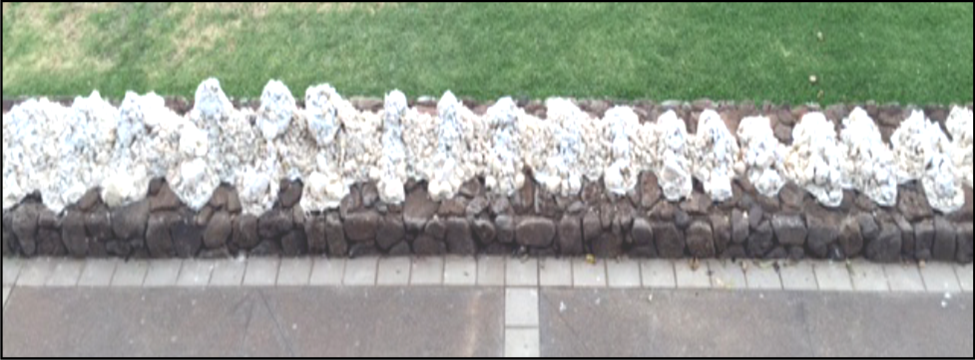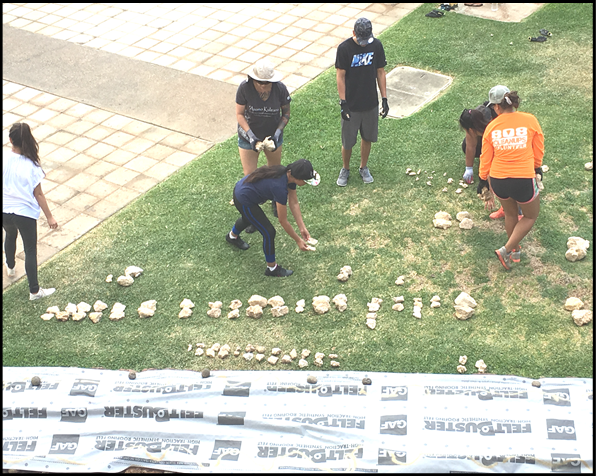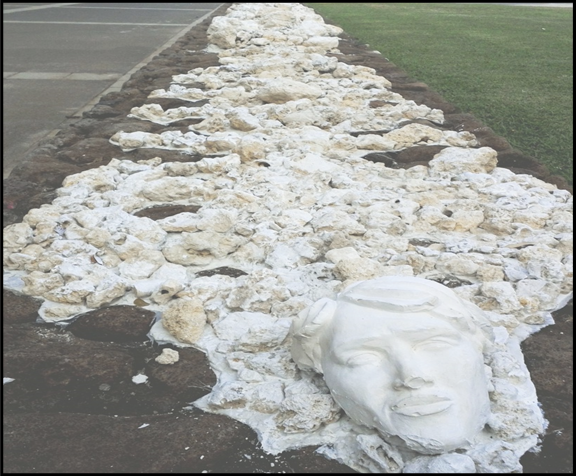Iwikuamoʻo - An Immersive Art Installation Experience

Iwikuamo‘o (backbone, spine, path) is an art immersion experience and installation conceptualized by artist Solomon Enos. Hand-stacked pieces of coral collected from exposed deposits in Wai‘anae form a long, undulating column in the central courtyard of UH West O‘ahu.
The linear arrangement of the coral and its materiality (as skeletal invertebrates of marine life) recalls a spinal cord, symbolic of Hawaiian genealogy and ancestral lineage. For Enos, this composition also refers to the entire Hawaiian archipelago, stretching across the Pacific from the Hawaiian Islands to the Northwestern Hawaiian Islands. In this way, Iwikuamo‘o incorporates the stories of ancestors and descendants. The undulation of the coral sculpture disrupts any connotations of sequential continuity. Rather, Enos emphasizes the continual interconnectivity between people, generations, place, and time.
Key to the concept of Iwikuamo‘o is the process and experience of its physical installation — a collaborative effort, of moving, sorting, placing, and reinforcing the presence of this “backbone” on campus. Over the course of four days, Enos led dozens of UH West O‘ahu students, faculty, and staff in the construction of the sculptural feature. The work was physical, intense and, at times, exhausting. Participants passed the coral pieces hand-to-hand from the staging area to the installation site and then carefully stacked the pieces in the column. The activity required a bit of elbow grease and sweat, and immersed participants in the experience of manual labor — an act of building on the backs of past generations and a nod to the area’s plantation past. All who contributed to the creation of Iwikuamo‘o not only engaged with art practice in a very tangible way but also became a part of the artwork’s story. They formed a physical bond with the environment, the materials, and with each other.
Iwikuamo‘o remains in the courtyard as a symbolic reminder of our direct interconnectivity to each other, to the past, and to the future. Exposed to the elements and time, it “lives,” and asks for interaction and care, offering a place for makana, protocols, reflection, and dialogue.




